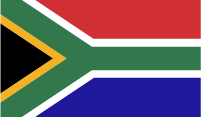Despite being home to the majority of the least developed countries on the planet and its reputation as the globe’s most underdeveloped continent, Africa is arguably the wealthiest region on Earth in terms of resources. While no African country makes it into the world’s 30 greatest economies, investigating the development of some of its richest countries is still worth attention.
While extreme poverty has plagued several African nations as a result of political, military and economic unrest, a number of nations on the continent are making strides towards revitalizing their economies. For instance, data provided by the World Bank shows that sub-Saharan Africa’s estimated gross domestic product (GDP) is close to US$2.05 trillion.
Despite the numerous challenges that African countries face, the continent’s economic future appears to be bright. The African Economic Outlook 2023 released by the African Development Bank Group at the end of May 2023 shows that, by the end of 2024, African economies are anticipated to stabilize.
Which are the richest countries in Africa by GDP based on purchasing power parity?
When evaluating a country’s internal market, GDP based on purchasing power parity (PPP) is more insightful than using nominal GDP. This is because PPP considers the relative cost of local goods, services, and rates of inflation, while nominal GDP refers solely to the total value of goods and services produced less the value of those made during the production process.
According to 2023 estimates from the IMF, the following African countries rank among the richest on the continent:
Source: IMF
Top 5 richest African countries (GDP (PPP) in billion USD)
 1. Egypt
1. Egypt
GDP (PPP): $1,803 billion
The GDP (PPP) figures show that today Egypt is the largest economic power on the African continent. The country’s reform and open economy program, implemented between 2006 and 2008, that aimed to attract foreign investment and increase development made it possible for the country to register high yearly growth rates of 7% and propelled it into the top tier of the richest countries in Africa.
However, since the beginning of the Russia-Ukraine war in early 2022, the country’s economy has stagnated with the year-over-year inflation rate soaring to 25.8% in January 2023 and in July 2023 the inflation rate hit 36.5%. In view of its dependency on imported food products, particularly those from Russia and Ukraine, Egypt has been especially badly hit by increasing food prices.
Although the unemployment rate is now a little above 7%, according to estimates, 60% of Egypt’s 104 million people live in poverty or very close to it.
According to the latest OECD report, Egypt’s economic growth is expected to pick up speed. As the consequences of currency devaluation fade, inflation is predicted to fall which will aid the recovery of household consumption. As soon as uncertainty is eradicated and financial circumstances return to normal, business investment will regain its pace and, due to the support for exporters, the nation’s exports will potentially increase.
 2. Nigeria
2. Nigeria
GDP (PPP): $1,372 billion
By 2025, the Nigerian economy is expected to have grown by an average of 3.4% per year, just slightly quicker than the 2.4% predicted population growth rate. The three pillars of trade, manufacturing, and services are likely to fuel the nation’s economic development.
Nigeria is the most populous nation on the African continent with over 218 million citizens and one of the largest oil producers in Africa. As a result of security upgrades in the oil-producing Niger Delta region, Nigeria is now producing 1.67 million barrels of oil and condensates on a daily basis. However, its oil industry has yet to significantly advance the nation’s economy.
At the same time, the country faces serious socio-economic issues. For instance, approximately 4 out of 10 Nigerians are considered to be poor. Many Nigerians do not have access to basic amenities like electricity, clean water, and adequate sanitation. For the most part, the country’s economic activity takes place along the coast of the Guinea Gulf, especially in and around the city of Lagos.
 3. South Africa
3. South Africa
GDP (PPP): $990 billion
This country is rich in natural resources and has developed advanced communication, power, and transportation industries. At the same time, the country’s economic growth faces problems, being incapable of facilitating the efficient delivery of goods to major centers, and its unreliable power supply also hinders economic progress.
Today, South Africa is facing an energy crisis that necessitates increased energy production capacity which means that investment will become a critical driver of growth. Furthermore, consumption is being affected by rising interest rates and inflation whereas exports are being impacted by power outages and slower global development.
In comparison to the 7% of wealth owned by the least wealthy 60% of the country’s population, the wealthiest 10% of South Africa’s citizens control 70.9% of the country’s total wealth. Approximately 18.2 million of 59 million South Africans experienced extreme poverty as of 2022. Compared to 2021, this meant that roughly 123,000 more people were designated as being poor.
 4. Algeria
4. Algeria
GDP (PPP): $620 billion
One of the top producers of oil and gas on the African continent, Algeria, like many other OPEC (Organization of the Petroleum Exporting Countries) members, significantly depends on its oil exports and the turbulence of the world market. The country has developed a substantial industrial base through major economic efforts since attaining independence in 1962. The local economy has experienced many volatile phases despite significant achievements including new roads, highways, educational institutions, healthcare facilities, industries, metros, among others.
The hydrocarbon boom over the past 20 years has facilitated Algeria’s progress in human and economic growth. In the period 1998 – 2007, the nation’s debt declined from $30.7bn to $5.6bn while the government made investments in infrastructure that fueled economic development and reduced poverty levels.
At the same time, the nation’s economy is still heavily dependent on oil and gas revenues which is why the government is motivated to diversify the economy in order to boost employment prospects, particularly for young people, and enhance the country’s revenue streams.
 5. Ethiopia
5. Ethiopia
GDP (PPP): $393.8 billion
Ethiopia’s economy has grown at an average annual rate of 6.0% during the last few years. This growth was primarily fueled by significant capital accumulation, particularly through investments in public infrastructure, among other contributing factors. The country boasts one of the most rapidly expanding economies worldwide and is the second-most populous country on the African continent with 123 million people.
Droughts, food shortages, and political upheaval have all had an impact on the country’s agriculture and the overall economy which is further negatively affected by an overreliance on the energy industry, particularly oil. In addition, conflicts in many regions run the risk of compromising the nation’s achievements in terms of social and economic growth.
At the same time, Ethiopia is quickly transitioning to an industrial and export-based economy and has shown promising patterns of poverty reduction in both rural and urban regions over the past 10 years. It is also worth noting that the COVID-19 pandemic had little impact on agriculture which employs more than 70% of the workforce, with this sector’s impact and its impact on growth somewhat increasing from prior years.
Final word
Despite often being characterized as the least economically advanced continent, Africa is globally recognized as one of the most resource-rich regions. However, some of the continent’s nations are currently experiencing political and economic unrest which is pushing millions of people into poverty. By attempting to make use of their resources, encouraging economic diversification, and implementing development plans proposed by governments, some of these challenges can be tackled.

